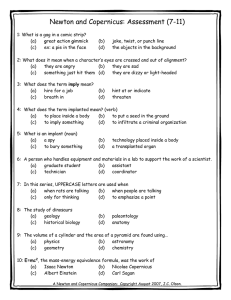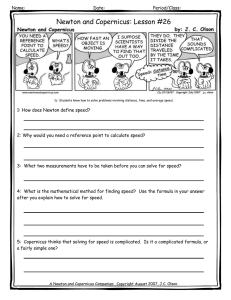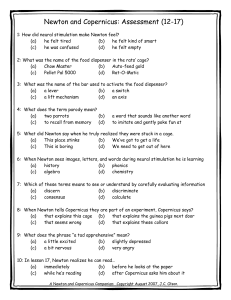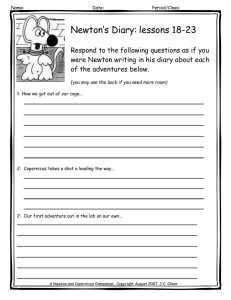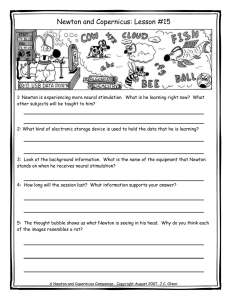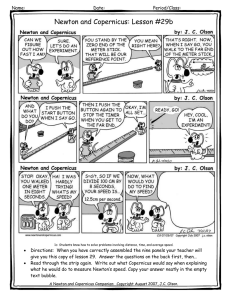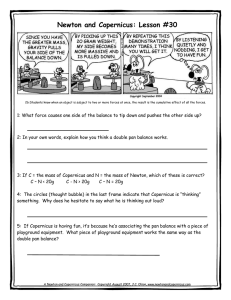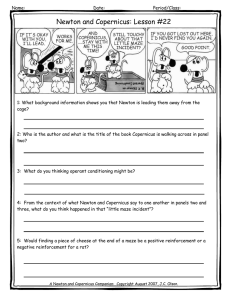19_outandabout.doc
advertisement
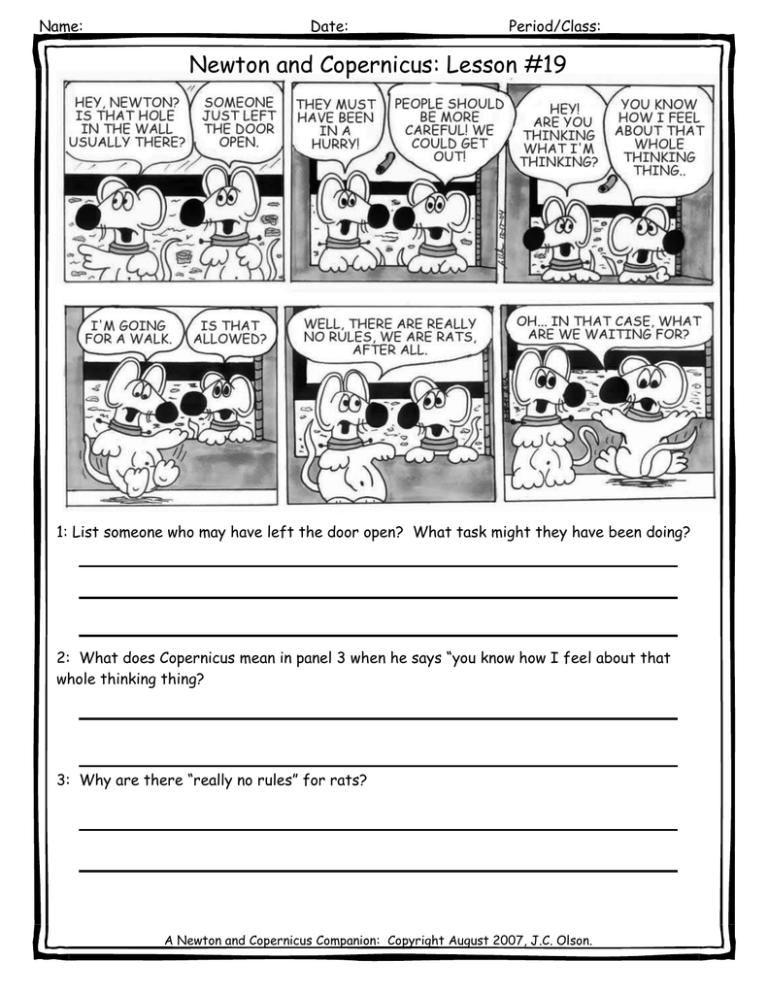
Name: Date: Period/Class: Newton and Copernicus: Lesson #19 1: List someone who may have left the door open? What task might they have been doing? 2: What does Copernicus mean in panel 3 when he says “you know how I feel about that whole thinking thing? 3: Why are there “really no rules” for rats? A Newton and Copernicus Companion: Copyright August 2007, J.C. Olson. Newton and Copernicus: Lesson #19 LESSON GUIDE: A: Have students read the text silently and carefully observe the background of the drawing to look for supporting information. (V) B: Have students read through the questions and circle the number of each question they feel they would be able to respond to. Pair/Share. C: Give each student about half a minute to explain to their partner what they think is happening based on what they see and read. (A) D: The pair discusses questions 1-3, then each student draws a box around the number (or circled number) of each question they would be able to respond to. E: Select sets of volunteers to act out the strip in front of the class. F: Students individually write out their responses to questions 1-3. Answers for 1-3 1: Technician putting a rat back after an experiment, a student weighing a rat, a custodian cleaning the cage, a caretaker putting food in the cage, a veterinarian checking the rat’s health, etc. Accept any answer that would make sense in a lab. 2: He means he isn’t comfortable with thinking, and he isn’t comfortable with Newton being able to learn things and become so smart. 3: In order for there to be rules, the rats would have to learn the rules and follow them. They would not need any rules. They are kept in a cage so they can’t get loose or into trouble. A rat couldn’t follow rules, it could only be trained to behave in a certain manner. A Newton and Copernicus Companion: Copyright August 2007, J.C. Olson.
